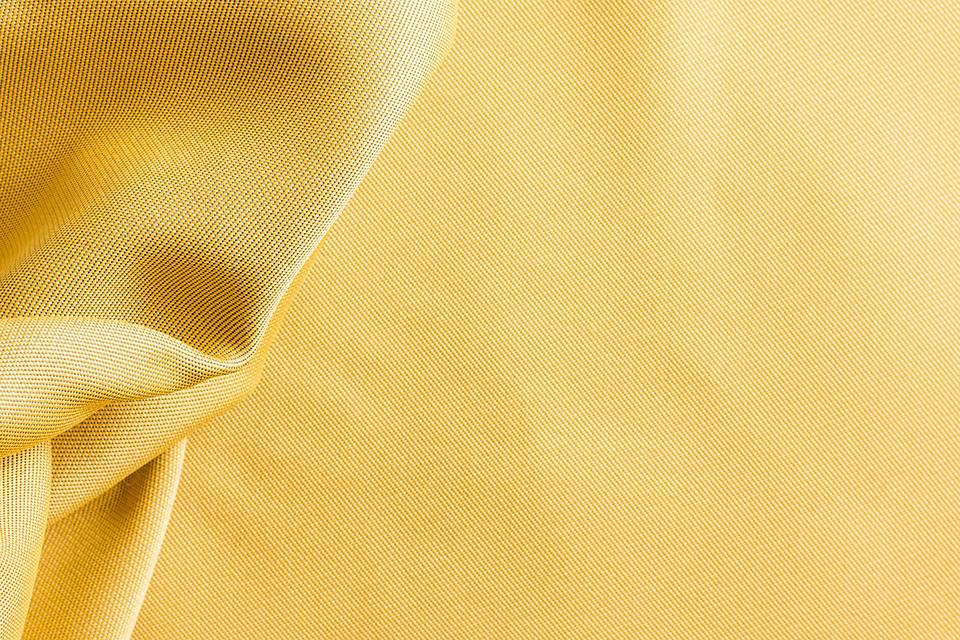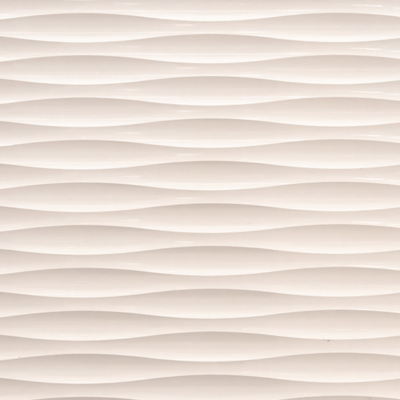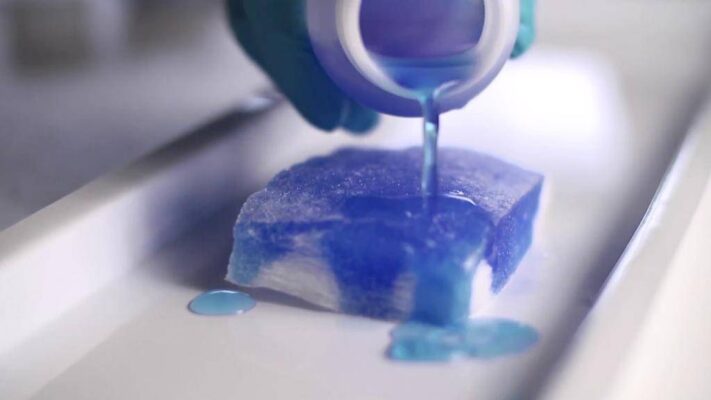For easy understanding, when we see from a consumer’s eye, the finishes are divided into below 3 types.
-
By appearance – How it looks ?
-
By texture – How it feels ?
-
By performance – How it behaves ?
Appearance finishing is nothing but creating fabrics that appeal to consumers fashion sense like colour of the fabric, prints, patterns, different wash looks etc.
Textures on the fabric which are basically touch and feel, given by brushing, raising, napping, embossing, sizing, weighing, etc.
Performance finishing is creating a fabric that meets the needs of consumers through various finishing techniques.
In textile finishing, we know that mechanical and chemical finishes are widely used but now-a-days bio-technological finishes are slowly building a great value in the market. The recent trends in industrial biotechnology show that social, environmental and economic benefits go hand-in-hand with applications of this technology. Enzymes are the most important biological agents that are now used in the textile industry. Today, enzymes are used to treat and modify fibres, particularly during textile pretreatments and for finishing the textiles afterwards.
Enzymatic bio-polishing removes the fuzz & pills of fibres from the fabric surface and gives a cleaner surface and a softer hand and increases lustre. Cellulases are the enzymes which are capable of hydrolysing the microfibrils protruding from the cotton surface. The weakened microfibrils tend to break off from the main body of the fibre and leave a smoother yarn surface. After treatment, the fabric shows a much lower pilling tendency. Unlike conventional chemical softeners, which tend to be washed out and often result in the yellowing of the treated textiles, the softness enhancing effects of cellulases are resistant to washing.

For cotton fabrics, bio-finishing is optional, but it is essential for lyocell, which is made from wood pulp and is characterized by a tendency to fibrillate easily. If the fibrils are not removed, the finished garments will end up covered with pills. In the case of wool, the use of transglutaminases has been shown to improve shrink resistance, tensile strength retention, handle, softness, wettability and consequently dye uptake, as well as reduction of felting tendency and protection from damage caused by the use of common detergents.
Enzymatic hydrolysis of polyester fibres with different lipases or esterases can increase the hydrophilicity and absorbance properties. The selective enzymatic hydrolysis of polyacrylonitrile fibres with nitrile hydratase and amidase could be an interesting alternative to chemical finishing. In the meantime, bio-polishing of polyester/cotton blends can be used as a novel technique for developing new shades.
Some of the main hurdles for the industrial implementation of enzymes are their low stability, low compatibility with other chemical agents, longer processing time, and relatively high cost. But on the positive side, enzymes show the advantage of lower energy consumption and avoid the use of harsh chemicals, when compared to chemical finishing.
In Part 2, 3 & 4, we came to know about 10 important functional finishes and in this Part 5 we will see few more interesting PERFORMANCE FINISHES.
Temperature regulating finish,
In recent years, new materials and new finishing processes for thermal regulation functions of textiles are studied extensively. This is a smart finishing technique that core body temperature by storing or releasing latent heat energy to change its phase and provide comfort to the wearer in diverse environments.
Micro-encapsules containing the phase change materials (PCM) use chemicals such as nonadecane and other medium chain length alkanes in their core.
When the ambient temperature increases above their melting point, the microencapsulated chemical melts and latent heat is absorbed thereby interrupting the increase in temperature of a garment. Once the ambient temperature falls the PCMs solidify and the latent heat is released, providing a heating effect.
PCMs can be used as heat storage materials in the design and manufacture of thermo-regulated textiles. In addition to PCMs, other materials such as paraffin waxes, hydrated salts, polyethylene glycols, etc., some new PCM materials such as fatty acid derivatives, bio-based materials, etc., are found suitable for textile applications. The thermal properties of PCM incorporated textiles can be designed to obtain the desired dynamic thermal insulation effect. PCM textiles with dynamic thermal insulation are now used for a wide range of industrial applications, specifically in aerospace, automotive, agriculture, biomedical, defence, sports and casual fabrics.
Anti-Slip or Non Slip Finish
A finish applied to a yarn to make it resistant to slipping and sliding when in contact with another yarn. The main effect of non-slip finishes is to increase the adhesion between fibres and yarns regardless of fabric construction, the generic term for these finishes would be fibre and yarn bonding finishes. Other terms that can be used include non-shift and slip-proofing finishes.
Adhesion between yarns is especially important in woven fabrics at the seams and in highly stretched areas like the elbows of shirts, blouses and jackets.

Non slip finishes are often used with under-constructed fabrics to compensate for the reduced yarn count and to achieve acceptable physical properties. Lining and pocketing fabrics made with smooth synthetic filaments are finished with friction enhancers combined with durable press agents, water repellents or hand modifiers to prevent seam slippage. Umbrella fabrics made from nylon or polyester filament yarns are treated with friction enhancers and water repellents. The properties of any woven fabric with long floats can usually be improved with non slip finishes. In particular, Jacquard upholstery fabrics with long floats are stabilized by back coating with film-forming polymers. A special variation of the non slip finishes, often combined with the incorporation of metal filaments, is the stab-and stitch-resistant finish, used for protective clothing and furniture, for example in trains and buses.
This finish not only prevent the woven from misalignment but also work as matting, linen-like finish, and anti-pilling. Delicate knitted fabrics are prone to snagging. This tendency can be reduced in this finishing. Modified acrylates are used as non slip agents. Need to careful with excess application of Silicone repellents which increases seam slippage.
Superabsorbent finishes
Some of the common examples of superabsorbent textiles include hygiene towels, wiping cloths, separation filters, reservoir textiles for agriculture, surgical dressings, special sportswear and even food packaging. Manufacturing of such materials can be based on fibres that are superabsorbent by nature, e.g. cellulosic (cotton, rayon, wood pulp) or polyacrylates as well as on application of superabsorbent finishes either on the individual fibres, that will be later used for fabricating textiles, or directly on the final textile surface.

Usually, superabsorbent finishes refer to polymeric systems applied in the form of coatings which have the intrinsic property of absorbing large amounts of water in their structure. A superabsorbent polymer can absorb and retain extremely large amounts of a liquid relative to its own mass and by doing so it can swell up to 1000 times. In most cases of superabsorbent materials, it is thought that the absorbed liquid is aqueous. However, superabsorbents can be used for other types of fluids as well, such as organic liquids and gases in specific technical applications, such as oil recovery.
Superabsorbent finishes are mainly polymer based materials. When they are used to absorb and retain water or aqueous liquids, superabsorbents frequently consist of polyelectrolytes. Hydrogels, polyacrylates, polysaccharides, metal nano particles, inorganic clay particles etc. are used for finishing a fabric and to make it superabsorbent.
There are three main functionalities for which superabsorbent finishes are applied on textiles :
- High fluid absorption capacity
- High fluid retention
- High or regulated absorption rate.
Superabsorbent finishes can be applied on fibre and textile surfaces using most of the conventional finishing techniques.
Hope all the performance finishes we have seen are useful and made you knowledgeable.
See you in my next article, follow me ….
RELATED TOPICS:#Apparel,Satheesh Kumar
Leave a comment
Our email address will not be published. Required fields are marked *







11 Comments
KennethturdyJan 12, 2023 at 01:32 am
купити електропідігрів підлоги
MichaelFabJan 11, 2023 at 12:55 pm
электрический теплый пол купить
HenrysuilsJan 10, 2023 at 01:20 am
купить электрический теплый пол под плитку
MichaelcatJan 01, 2023 at 08:31 am
https://linebet-in-bd.com/
ErnestNixDec 28, 2022 at 03:31 am
online casino apps
Heating-FilmDec 26, 2022 at 17:07 pm
https://heating-film.com/
JoshuaMotDec 13, 2022 at 13:00 pm
https://www.herbatastore.com/
Number-varDec 07, 2022 at 15:19 pm
australia toll free numbers Continent Telecom
Virtual Local NumbersOct 27, 2022 at 12:22 pm
In my opinion you are not right. I am assured. I can defend the position. Write to me in PM.
Code HerbOct 24, 2022 at 05:47 am
And how it to paraphrase?
Sukumar KNov 12, 2020 at 10:44 am
Sateesh, I really appreciate your efforts in re-collecting the finishes needed for Apparel to achieve the properties of appearance, texture and performance. Sharing the knowledge with other technicians is highly appreciated.